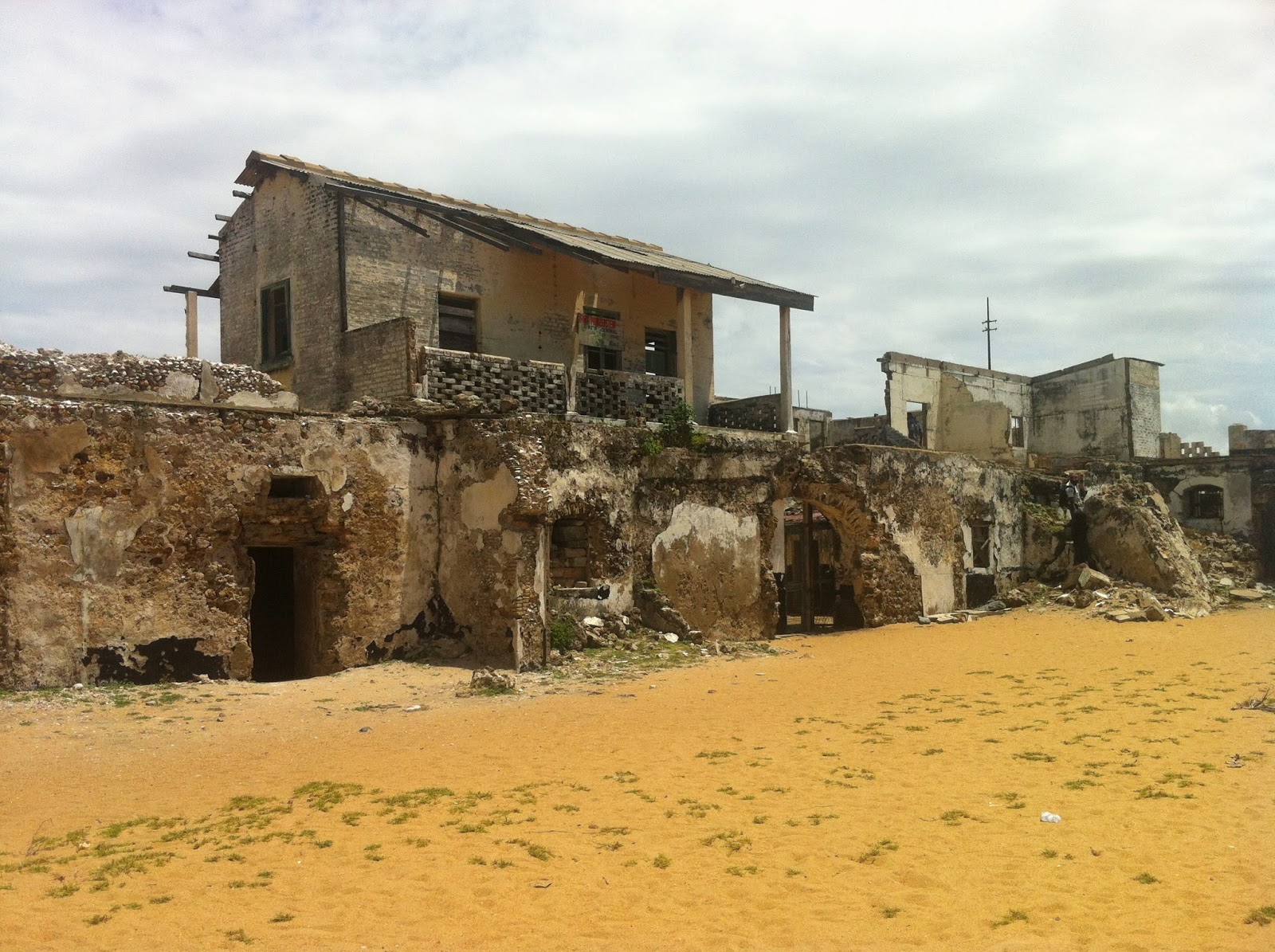Parts of the town were devastated by sea erosion between 1960s and 1980s.
 Keta was settled by
Anlo Ewe, a sub-group of Ewe people who,in the 17th century migrated from Ketu
in Benin to the area.
Keta was settled by
Anlo Ewe, a sub-group of Ewe people who,in the 17th century migrated from Ketu
in Benin to the area.
Keta was an important trading post between the 14th and the
late 20th centuries. The town attracted the interest of the Danish, because
they felt they could establish a base here without interference from rival
European nations. Their first initiative was to place a factor at Keta to sell
alcohol.
In 1792 a war between Anloga and Keta In 1784, Fort
Prinzenstein, like most slave trade forts, was built by the sea's edge. However
the sea had retreated by about 600 ft by 1907. Since then Keta has been subject
to sustained erosion. The Bremen Factory and Coconut plantation, which were
close to the high water mark in 1907, had been swept away by the see by 1924.
The erosion has now advanced as far as Queen Street and started to wear away
the Fort.
To save the town from drowning government, gave way for a
sea defense project, estimated at $84 million to prevent the sea from consuming
the land.
 Prinzenstein Located in Keta, this fort was built by the
Danes. This fort played a significant role in the slave trade involving
Europeans in West Africa, the Caribbean and southern USA. Apart from a small
fort in Benin and Senegal, the fort at Keta is the only ancient European built
fort of its kind east of the Volta River, which is close to the slave coast of
Benin (Dahomey). Parts of it have been destroyed by the angry waves of the sea,
but a significant portion remains to tell a sad story.
Prinzenstein Located in Keta, this fort was built by the
Danes. This fort played a significant role in the slave trade involving
Europeans in West Africa, the Caribbean and southern USA. Apart from a small
fort in Benin and Senegal, the fort at Keta is the only ancient European built
fort of its kind east of the Volta River, which is close to the slave coast of
Benin (Dahomey). Parts of it have been destroyed by the angry waves of the sea,
but a significant portion remains to tell a sad story.
Prinzenstein is one of the few that lie east of the Volta
River. It was initially built by Danish
traders in 1784 for defensive purposes in a war against the Anlo Ewe and to
keep the area safe from other colonial powers.
Up until 1803 the fort was used as a dungeon for slaves awaiting
transportation to the Caribbean. In 1850 the fort, along with the rest of the
Danish Gold Coast was sold to Britain. The fort was used as a prison for a
period before it was partially destroyed by the sea in 1980. The remains of the fort are now visited by
tourists.
STORY BY: ESTHER ASABEA

No comments:
Post a Comment